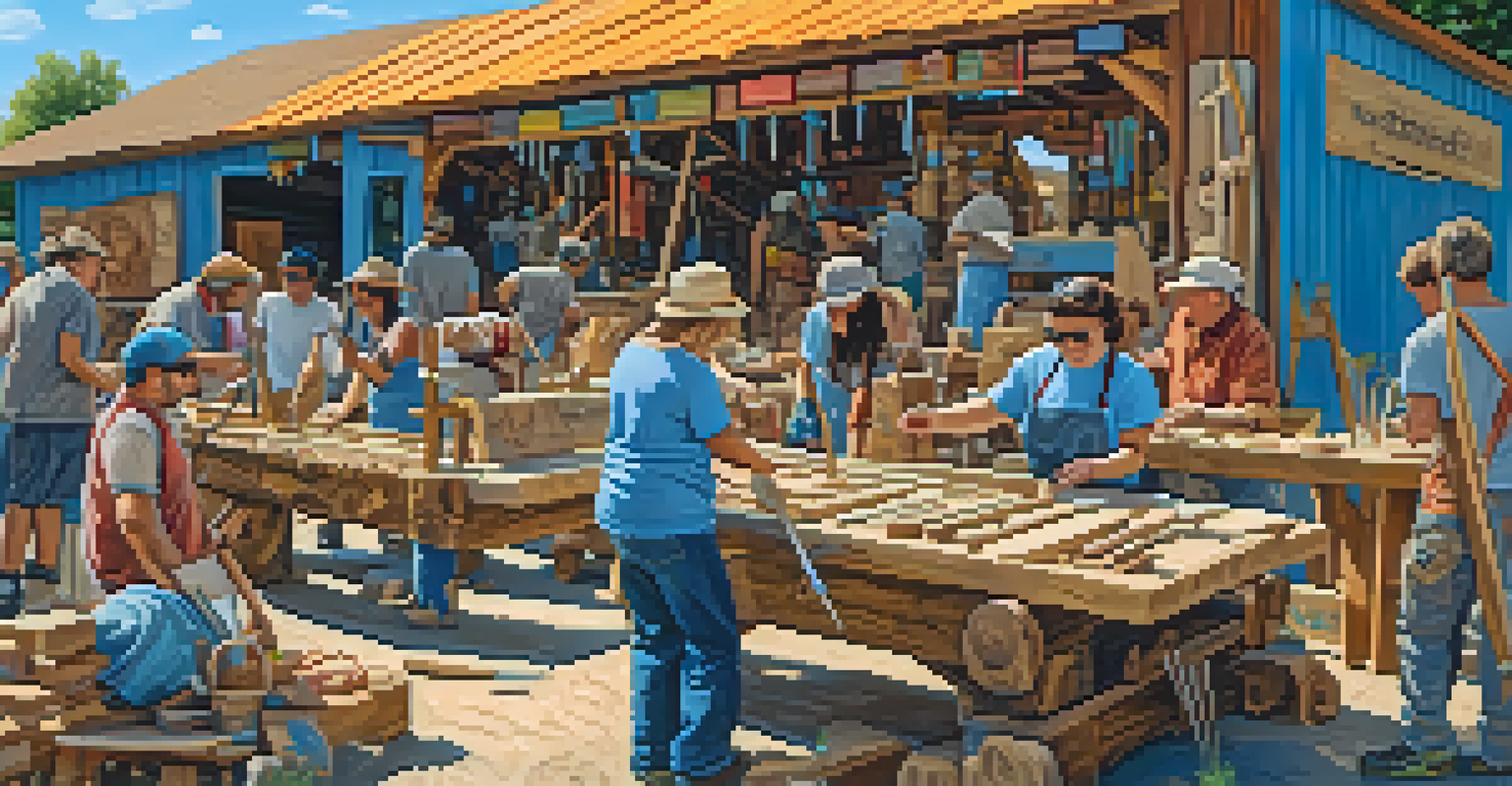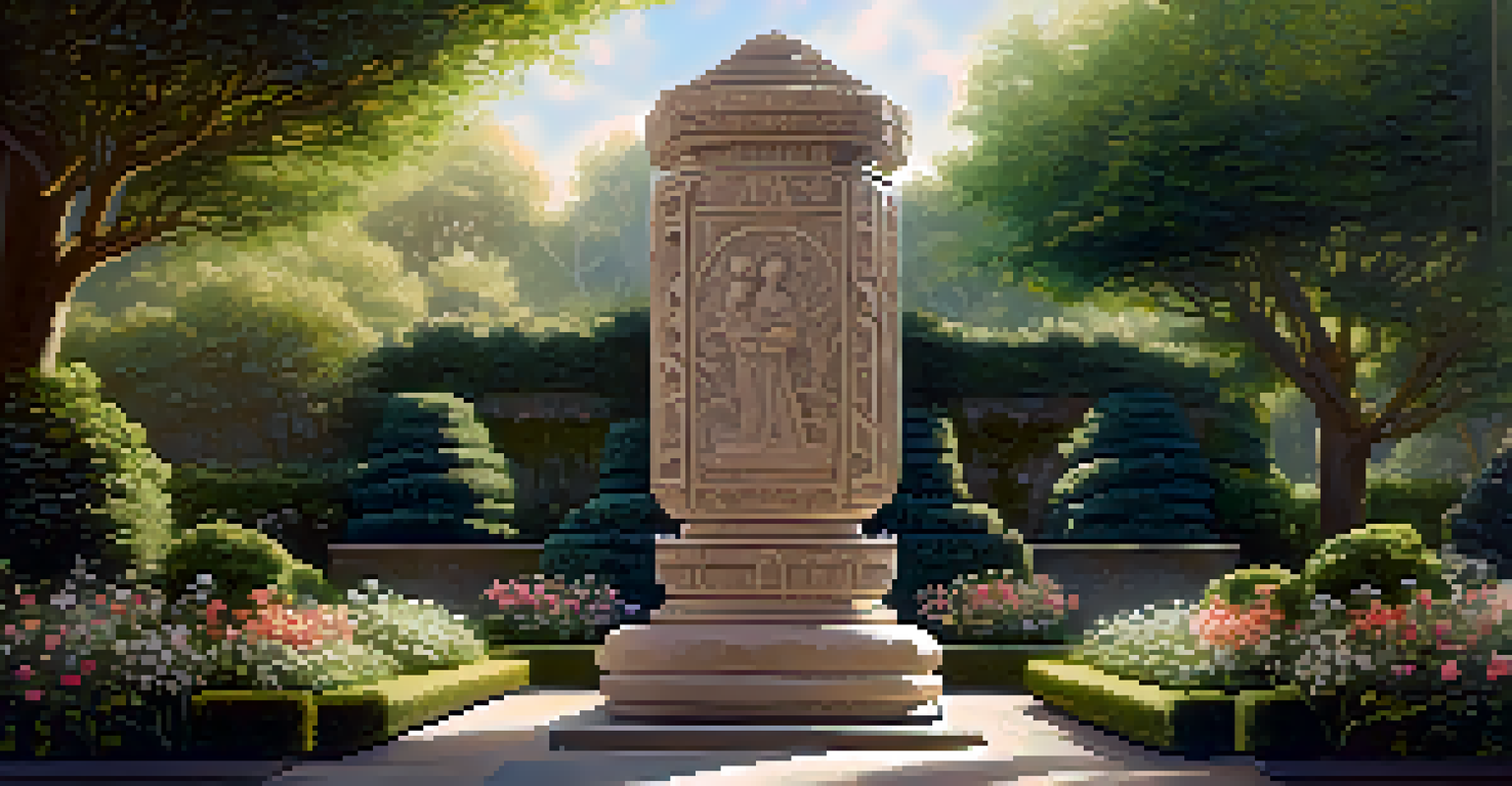Contemporary Artists Who Revitalize Carving in Art Today

The Resurgence of Carving in Modern Art
Carving, once overshadowed by digital art and painting, is experiencing a renaissance. Artists today are rediscovering this ancient technique, using it as a medium to express contemporary themes. The tactile nature of carving invites viewers to engage with art on a deeper sensory level, making each piece feel uniquely personal.
Art is the most beautiful of all lies.
In a world dominated by technology, the act of carving offers a refreshing contrast. It connects us to our primal roots, reminding us of the craftsmanship and labor that go into creating art. This revival is not just about the technique itself but also about the stories and emotions that carved pieces can convey.
Contemporary artists are challenging the perception of carving, pushing boundaries and experimenting with materials. From wood to stone to synthetic composites, their innovations are bringing new life to this age-old craft.
Exploring the Work of Contemporary Carvers
One notable artist leading the charge is El Anatsui, whose intricate sculptures made from repurposed materials showcase the beauty of carving. His work transforms everyday items into stunning art pieces, demonstrating that carving can evolve and adapt. Anatsui's pieces often reflect cultural narratives, inviting viewers to consider the stories behind the materials.

Similarly, artist David Nash focuses on the interplay between nature and sculpture. His wood carvings are not only visually striking but also celebrate the organic forms found in nature. By incorporating natural elements, Nash reminds us of the interconnectedness of art and the environment.
Carving's Modern Renaissance
Carving is experiencing a revival as contemporary artists embrace this tactile medium to express modern themes.
These artists, among others, are redefining what it means to carve in the modern age. Their work serves as a bridge between traditional techniques and contemporary themes, showing that carving can still be relevant and impactful.
Innovative Techniques in Carving Today
Modern carvers are employing innovative techniques that blend traditional methods with contemporary practices. For example, some artists are using CNC machines to create intricate designs that would be nearly impossible by hand. This fusion of technology and craftsmanship opens up new possibilities for artistic expression.
The process of creation is like a journey where the artist explores the depths of their own soul.
Additionally, many contemporary artists are exploring mixed media, incorporating elements like glass, metal, and even light into their carved works. This approach not only enhances the visual appeal but also adds layers of meaning to the pieces. The combination of different materials can tell a more complex story, engaging the viewer in unexpected ways.
This spirit of experimentation reflects a broader trend in the art world, where boundaries between disciplines are increasingly blurred. Carving is no longer confined to one approach; it is evolving into a dynamic form that embraces change.
Cultural Narratives in Carved Art
Many contemporary artists use carving to explore cultural narratives and social issues. For instance, artist Yinka Shonibare combines traditional African elements with European styles in his sculptures, addressing colonial histories through his work. By carving out these narratives, he invites discussions about identity and heritage.
Similarly, artists like Niki de Saint Phalle have carved their way into dialogues about feminism and empowerment. Her playful, colorful sculptures challenge traditional gender roles and invite viewers to reflect on societal norms. Through carving, these artists express complex themes that resonate with contemporary audiences.
Cultural Narratives Through Carving
Artists use carving to explore and comment on cultural narratives and social issues, enriching the art form's relevance.
These cultural narratives add depth and relevance to carved art, showing that it can be a powerful medium for commentary and reflection. The stories told through carving often resonate on personal and communal levels, making them impactful in today's art landscape.
The Role of Community in Carving Revitalization
Community plays a crucial role in the revitalization of carving as an art form. Many contemporary artists engage with local artisans and craftspeople, fostering collaboration and knowledge sharing. This sense of community not only strengthens traditional practices but also encourages innovation within the craft.
Workshops and community events centered around carving have become increasingly popular, allowing individuals of all skill levels to explore this art form. These gatherings create a space for learning and creativity, often resulting in unique collaborative pieces that embody collective stories.
As more artists and community members come together, the carving landscape continues to evolve, blending diverse influences and techniques. This collaborative spirit ensures that carving remains a vibrant and relevant medium in the contemporary art scene.
Sustainability in Contemporary Carving Practices
Sustainability is becoming a central theme in many contemporary carving practices. Artists are increasingly aware of their environmental impact and are seeking to source materials responsibly. For instance, some use reclaimed wood or biodegradable materials to create their sculptures, minimizing waste.
This commitment to sustainability not only enhances the artistic process but also resonates with audiences who value eco-consciousness. By choosing materials that tell a story of reuse and regeneration, these artists contribute to a larger conversation about environmental stewardship in the art world.
Sustainability in Carving Practices
Many contemporary carvers prioritize sustainability by sourcing materials responsibly and minimizing environmental impact.
Moreover, sustainability in carving can inspire future generations of artists to think critically about their practices. As the art community embraces this shift, carving is not only revitalized but also aligned with modern values of conservation and mindfulness.
The Future of Carving in Contemporary Art
Looking ahead, the future of carving in contemporary art appears bright and full of potential. As artists continue to innovate and challenge traditional methods, we can expect to see even more diverse expressions of this craft. The blending of technology, culture, and sustainability will likely shape the next wave of carving artistry.
Moreover, as audiences become more engaged with the narratives behind carved works, the demand for meaningful art will grow. This trend encourages artists to delve deeper into their cultural roots and personal stories, enriching the art form even further.

Ultimately, the revitalization of carving as an art form represents a broader movement within the art world—one that values craftsmanship, community, and cultural dialogue. As contemporary artists carve their paths, we can look forward to witnessing their impact on the future of art.